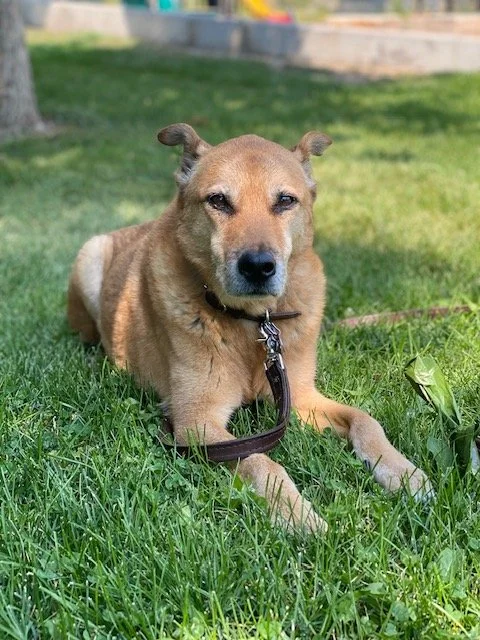Meet Henry
Chronic Spinal Pain Treatment
Fourteen year old Henry was struggling with profound anxiety in general and episodes of pain after defecating. Additionally, his family noticed he seemed weaker and unsteady in his hindlimbs. Henry was not responding to medications and his family veterinarian referred to Dr. Mich. After a thorough history, review of his records, and evaluation, pain was localized to the lumbosacral (low lumbar) spine region. Radiographs demonstrated degenerative changes that can cause narrowing of the spinal canal. MRI or dynamic CT were discussed as the best next step diagnostically. MRI and CT can directly reveal narrowing that can cause compression of the nerves in this region causing constant or intermittent pain. Henry’s family decided to avoid these tests due to his advanced age.
Symptomatic therapy was begun including medication changes, manual therapy, rehabilitation, and a lumbosacral epidural injection.
Pre-Injection
Injection Site
After his injection Henry’s family wrote:“Henry is doing SO GREAT!!! He's been able to go on longer walks again (I'm not taking him too far just so I don't tire him out too much). Before the steroid I could just take him out to go to the bathroom and come immediately back home he was in so much pain. Now we can stroll a bit and sit in the grass. He is going to the bathroom and seems very comfortable. He's also eating more which is great. His appetite has returned. Henry has his spark back and it means the world to me. Thank you!”
Epidural injection of steroid is a symptomatic treatment for degenerative lumbosacral stenosis. This technique is also used in humans. Careful and thorough evaluation and screening radiographs are needed to determine whether this therapy is appropriate as part of a comprehensive treatment plan. Typically a 2 injection serious is performed and then repeated as needed as a single injection if symptoms recur.




